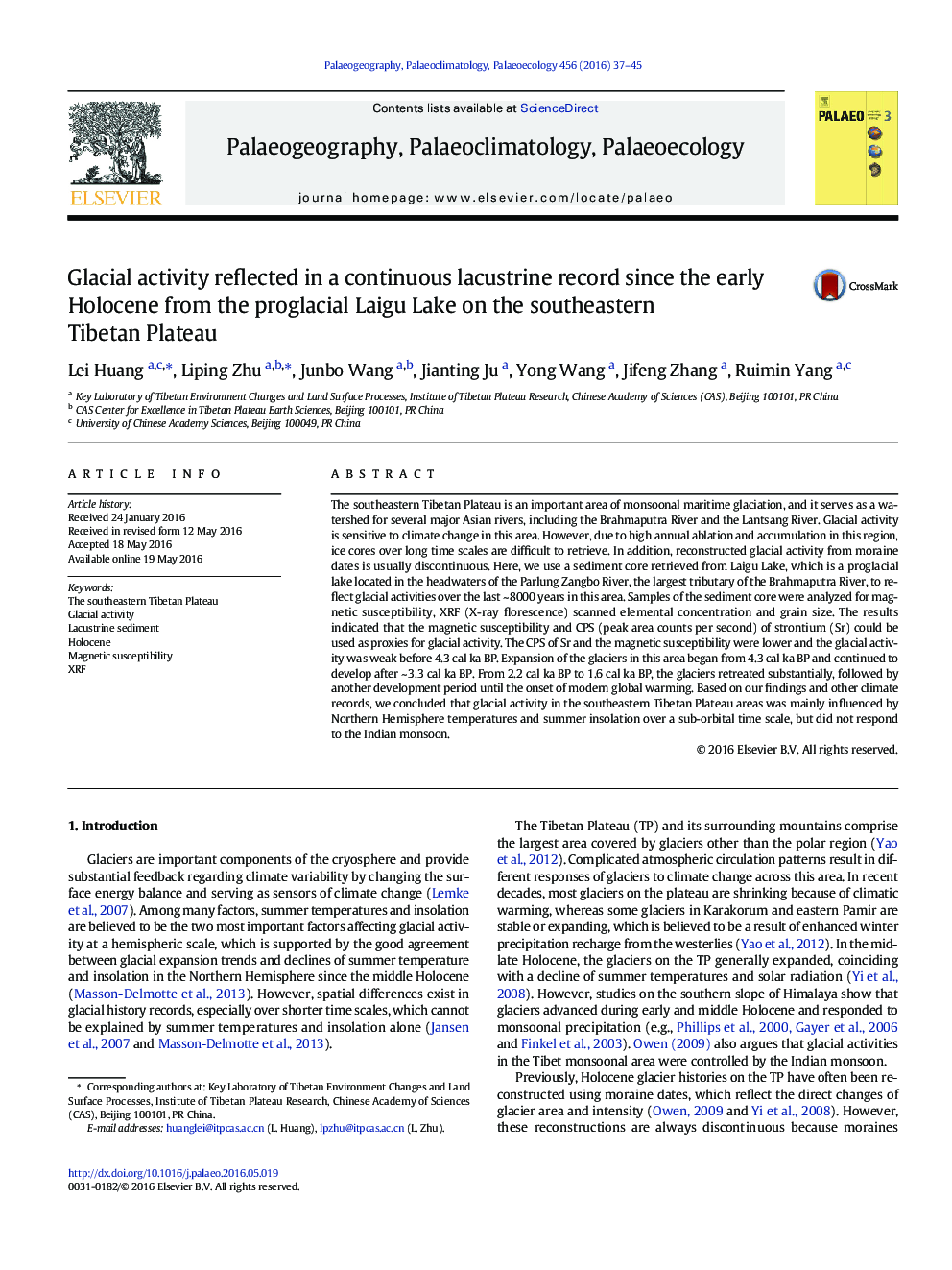| کد مقاله | کد نشریه | سال انتشار | مقاله انگلیسی | نسخه تمام متن |
|---|---|---|---|---|
| 4465678 | 1622135 | 2016 | 9 صفحه PDF | دانلود رایگان |
• We confirm two proxies reflecting clastic input produced by glacial erosion.
• We reconstruct a continuous record of glacier activity on the southeastern TP through the last 8000 years.
• This paper provides new insight on the relationship between climate change and glacier activity in the study area.
The southeastern Tibetan Plateau is an important area of monsoonal maritime glaciation, and it serves as a watershed for several major Asian rivers, including the Brahmaputra River and the Lantsang River. Glacial activity is sensitive to climate change in this area. However, due to high annual ablation and accumulation in this region, ice cores over long time scales are difficult to retrieve. In addition, reconstructed glacial activity from moraine dates is usually discontinuous. Here, we use a sediment core retrieved from Laigu Lake, which is a proglacial lake located in the headwaters of the Parlung Zangbo River, the largest tributary of the Brahmaputra River, to reflect glacial activities over the last ~ 8000 years in this area. Samples of the sediment core were analyzed for magnetic susceptibility, XRF (X-ray florescence) scanned elemental concentration and grain size. The results indicated that the magnetic susceptibility and CPS (peak area counts per second) of strontium (Sr) could be used as proxies for glacial activity. The CPS of Sr and the magnetic susceptibility were lower and the glacial activity was weak before 4.3 cal ka BP. Expansion of the glaciers in this area began from 4.3 cal ka BP and continued to develop after ~ 3.3 cal ka BP. From 2.2 cal ka BP to 1.6 cal ka BP, the glaciers retreated substantially, followed by another development period until the onset of modern global warming. Based on our findings and other climate records, we concluded that glacial activity in the southeastern Tibetan Plateau areas was mainly influenced by Northern Hemisphere temperatures and summer insolation over a sub-orbital time scale, but did not respond to the Indian monsoon.
Journal: Palaeogeography, Palaeoclimatology, Palaeoecology - Volume 456, 15 August 2016, Pages 37–45
